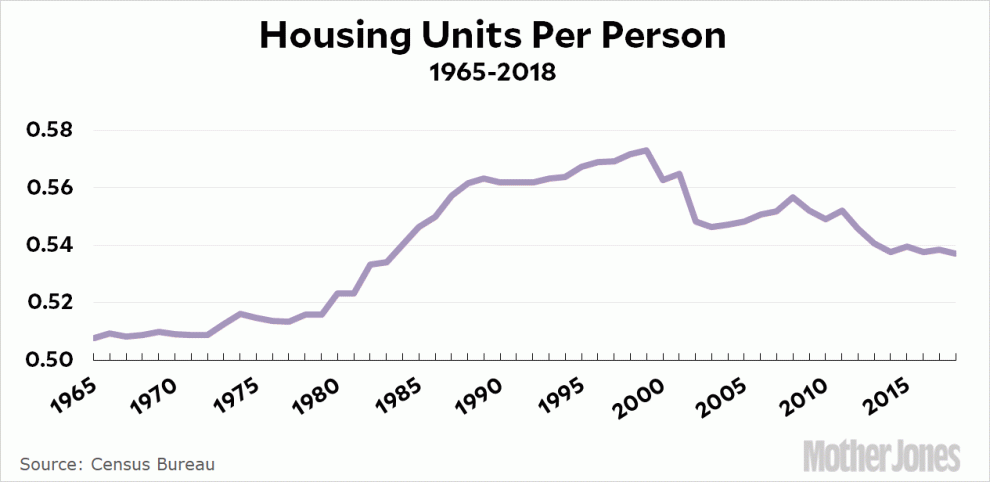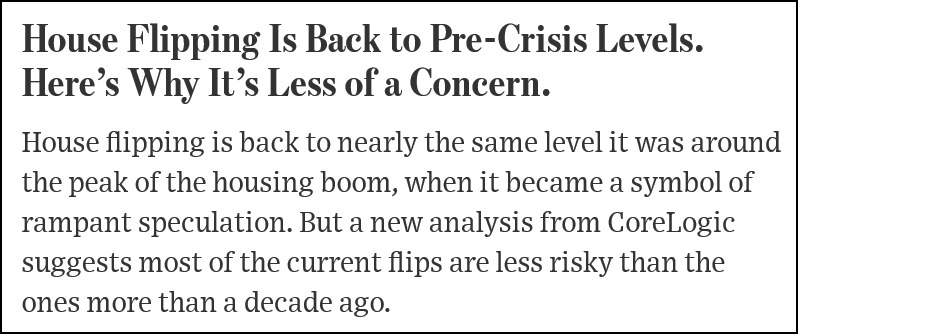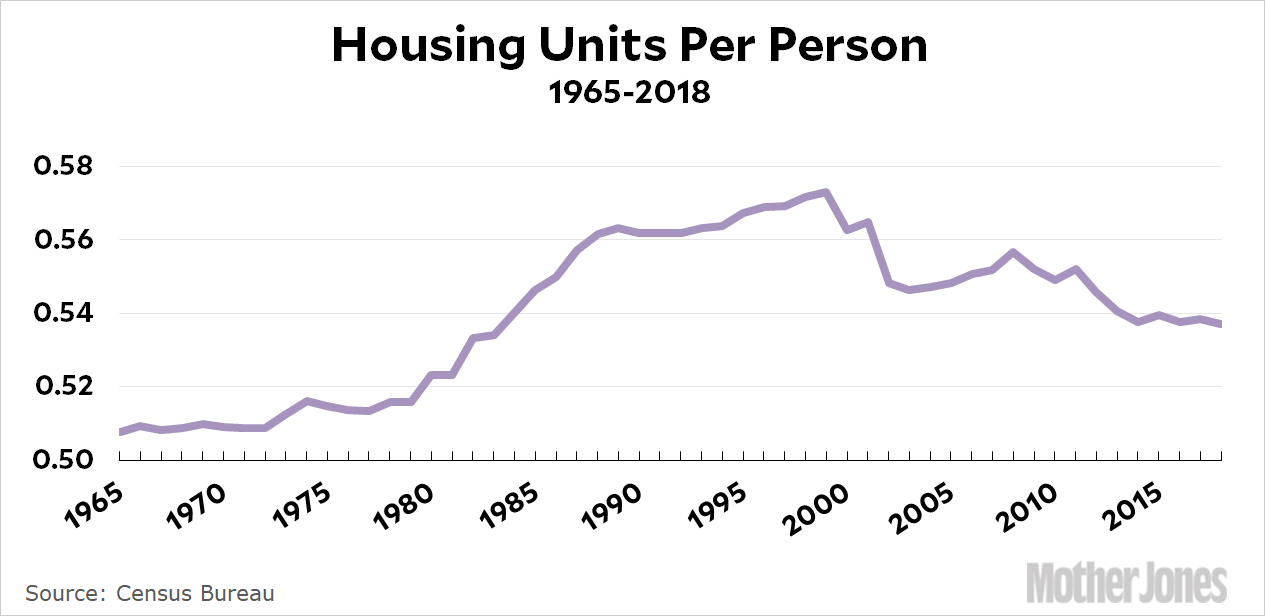
I do so love headlines like this one from the Wall Street Journal:

Feel free to read the article if you want. I don’t think I’ll bother, especially since my internet connection has slowed to molasses levels for some reason. However, since we’re on the subject of houses, here’s a chart I made last night:

I was curious to see what the broadest possible look at the housing market would show us. The answer appears to be that housing inventory took a big dive from 1999-2003. Since then it’s been relatively flat, with a bit of a decline during the Great Recession. Since 2014 it’s been at about 1985 levels.
This is nationwide, so it doesn’t account for the housing supply in specific places like the Bay Area or Seattle. On the other hand, it also doesn’t account for generational changes, namely the aging of the baby boomers, which probably reduced the demand for housing. With those caveats, at a first glance it doesn’t look like we have a nationwide shortage of housing. Rather, it looks like the housing boom starting in 1980 went a little too far and corrected in 1999. It doesn’t look especially like a crisis, but maybe I’ll try to look into this a little more deeply later in the day.















